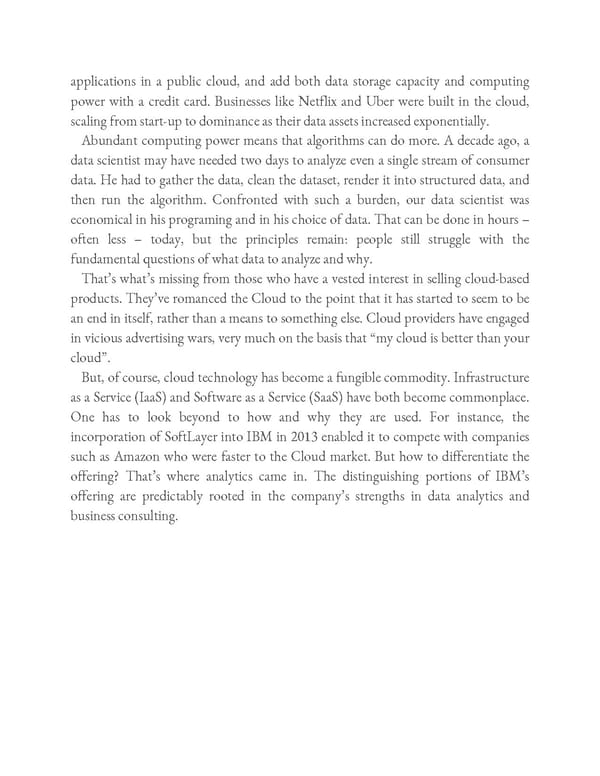applications in a public cloud, and add both data storage capacity and computing power with a credit card. Businesses like Netflix and Uber were built in the cloud, scaling from start-up to dominance as their data assets increased exponentially. Abundant computing power means that algorithms can do more. A decade ago, a data scientist may have needed two days to analyze even a single stream of consumer data. He had to gather the data, clean the dataset, render it into structured data, and then run the algorithm. Confronted with such a burden, our data scientist was economical in his programing and in his choice of data. That can be done in hours – often less – today, but the principles remain: people still struggle with the fundamental questions of what data to analyze and why. That’s what’s missing from those who have a vested interest in selling cloud-based products. They’ve romanced the Cloud to the point that it has started to seem to be an end in itself, rather than a means to something else. Cloud providers have engaged in vicious advertising wars, very much on the basis that “my cloud is better than your cloud”. But, of course, cloud technology has become a fungible commodity. Infrastructure as a Service (IaaS) and Software as a Service (SaaS) have both become commonplace. One has to look beyond to how and why they are used. For instance, the incorporation of SoftLayer into IBM in 2013 enabled it to compete with companies such as Amazon who were faster to the Cloud market. But how to differentiate the offering? That’s where analytics came in. The distinguishing portions of IBM’s offering are predictably rooted in the company’s strengths in data analytics and business consulting.
 Ogilvy on Advertising in the Digital Age Page 214 Page 216
Ogilvy on Advertising in the Digital Age Page 214 Page 216